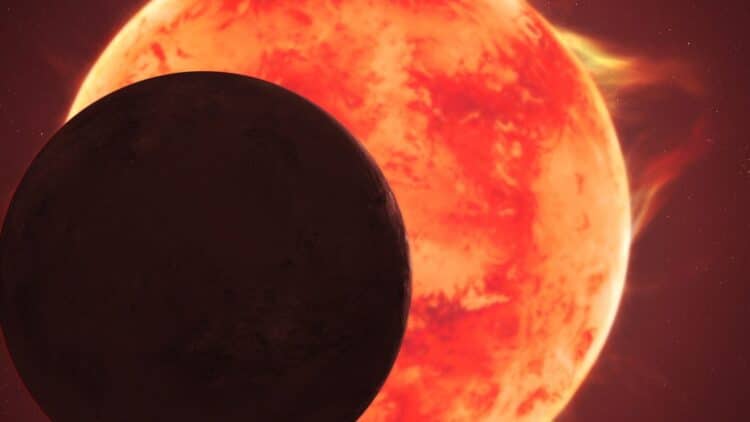What if there were an Earth-like planet orbiting a distant star just 40 light-years away? We’re not talking about science fiction, but a real possibility that has astronomers breathless. This mysterious world is rocky, has dimensions similar to our own, and lies precisely in the so-called “habitable zone,” that band around the star where temperatures allow the existence of liquid water. But being in the right zone doesn’t guarantee anything. After all, Mars and Venus are also within the Sun’s habitable zone, and yet only Earth supports oceans and life. The decisive detail is another: the atmosphere.
The real question: a lifeless rock or a hidden cradle of life?
Imagine a planet orbiting a small red star, among six other equally intriguing companions. Among them, there’s one perfectly positioned, neither too close nor too far, to raise the inevitable question: could something be breathing there? To try to answer, scientists turned to the James Webb Space Telescope (JWST), the most powerful telescope ever launched into space. This is because when this planet passes in front of the star, some of the light is filtered by any surrounding layers, revealing chemical clues hidden in wavelengths invisible to the human eye.
This is where the revelation comes in: this world is known as TRAPPIST-1e, and the “heavy veil” that may envelop it would be a secondary atmosphere, composed of heavy gases like nitrogen. This type of veil is precisely what can trap heat, protect the surface, and allow water to exist in a liquid state. To understand the importance of this, just look at our Solar System.
In other words, Earth, Mars, and Venus are in the Sun’s habitable zone, but only one of them supports life. Mars has lost most of its atmosphere and, with it, its water. Venus, on the other hand, has a suffocating atmosphere of carbon dioxide that has turned it into a living hell. This means that the habitable zone is just a stage; the atmosphere is the real protagonist.
Through the cosmic noise: a living sky or a barren silence?
Of course, observing such a distant planet isn’t simple. The red dwarf star that hosts it is highly active, riddled with sunspots and magnetic flares. These stellar imperfections create noise in the data, masking any signatures from the planet. It took more than a year of work for scientists to eliminate these interferences and begin interpreting the signals with confidence.
“We’re seeing two possibilities. The most exciting is that there is, indeed, an atmosphere. But we can’t rule out the opposite,” said Ryan MacDonald, from the University of St Andrews. This uncertainty, far from being a problem, shows that we’re pushing the limits of what science can see today. It’s no wonder that James Webb himself detected more than 800,000 galaxies in the darkness.
Unveiling the veil: a puzzle that questions our place in the cosmos
So far, JWST has observed only four transits of this planet. But over the next few years, that number is expected to jump to nearly twenty. Each new observation is like adding more pieces to a puzzle that’s still in its infancy. These studies are part of a large international project called DREAMS, which brings together more than 30 scientists from different countries. The goal is clear: to reveal what truly lies beneath this veil.
The fact that we can investigate this mystery already marks a new era in astronomy. The JWST has given us eyes to probe the atmospheres of distant worlds, and that’s revolutionary. Lifting this veil will be more than revealing a planet: it will be a giant step forward in understanding how rare or common life might be in the cosmos. This, incidentally, reminds us that the “formula for life” appeared at -440°F.


